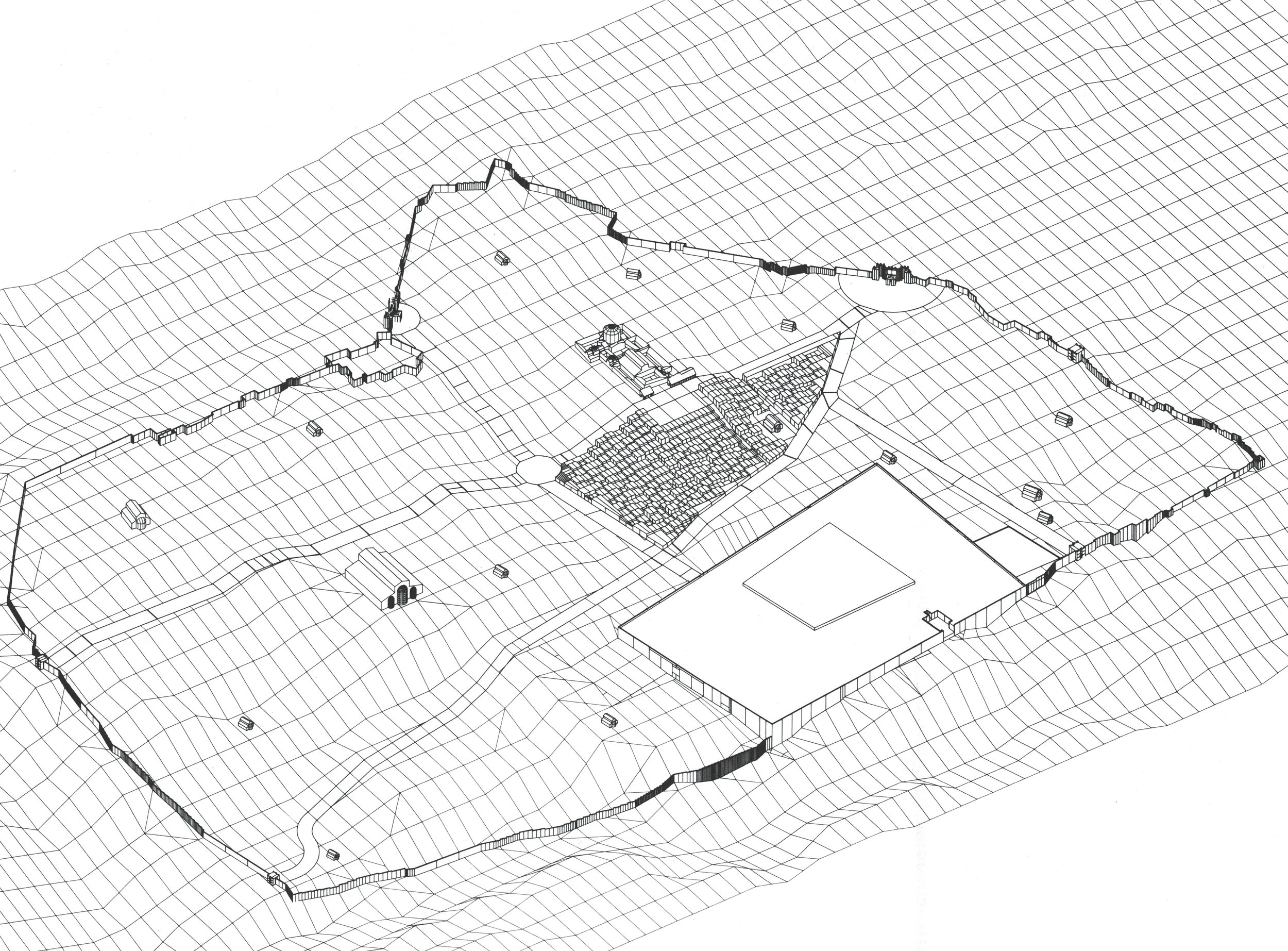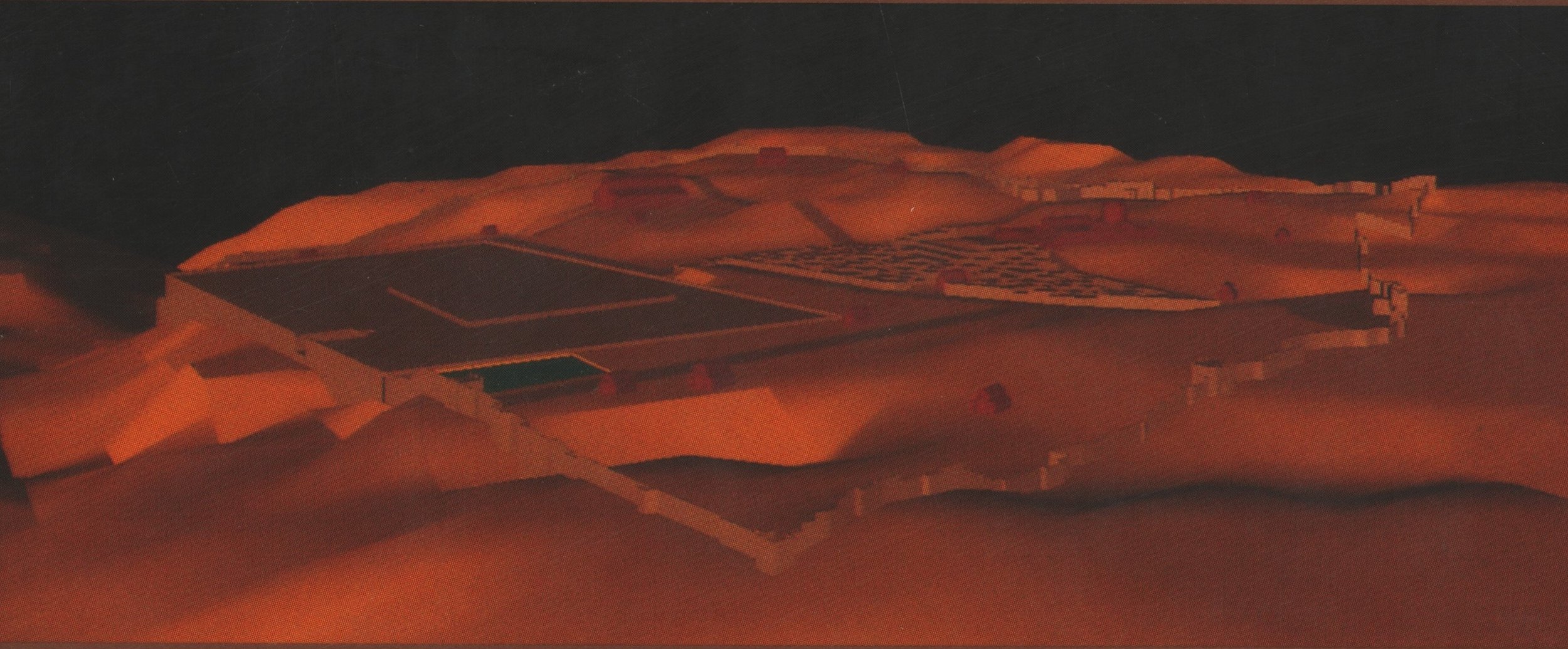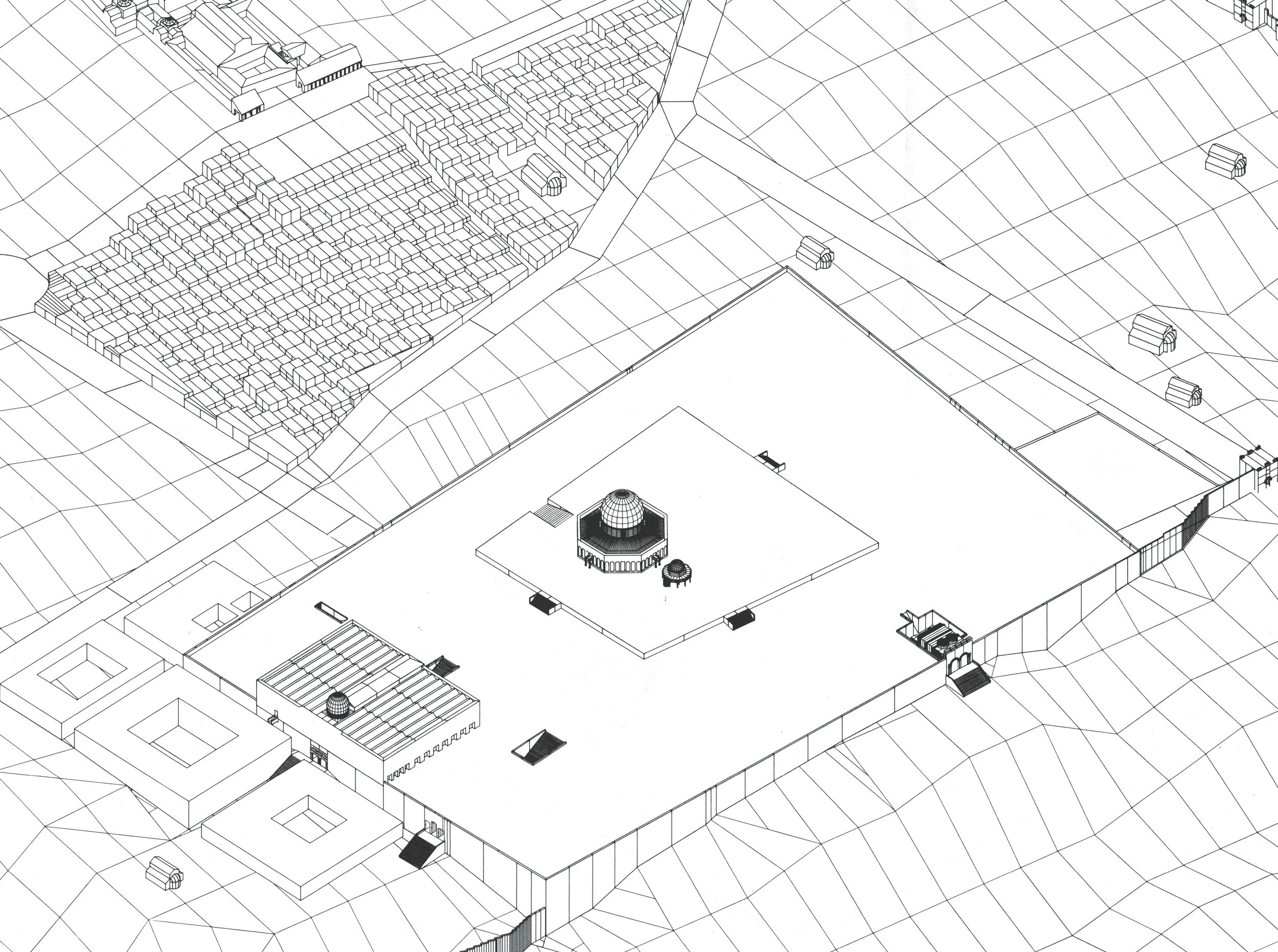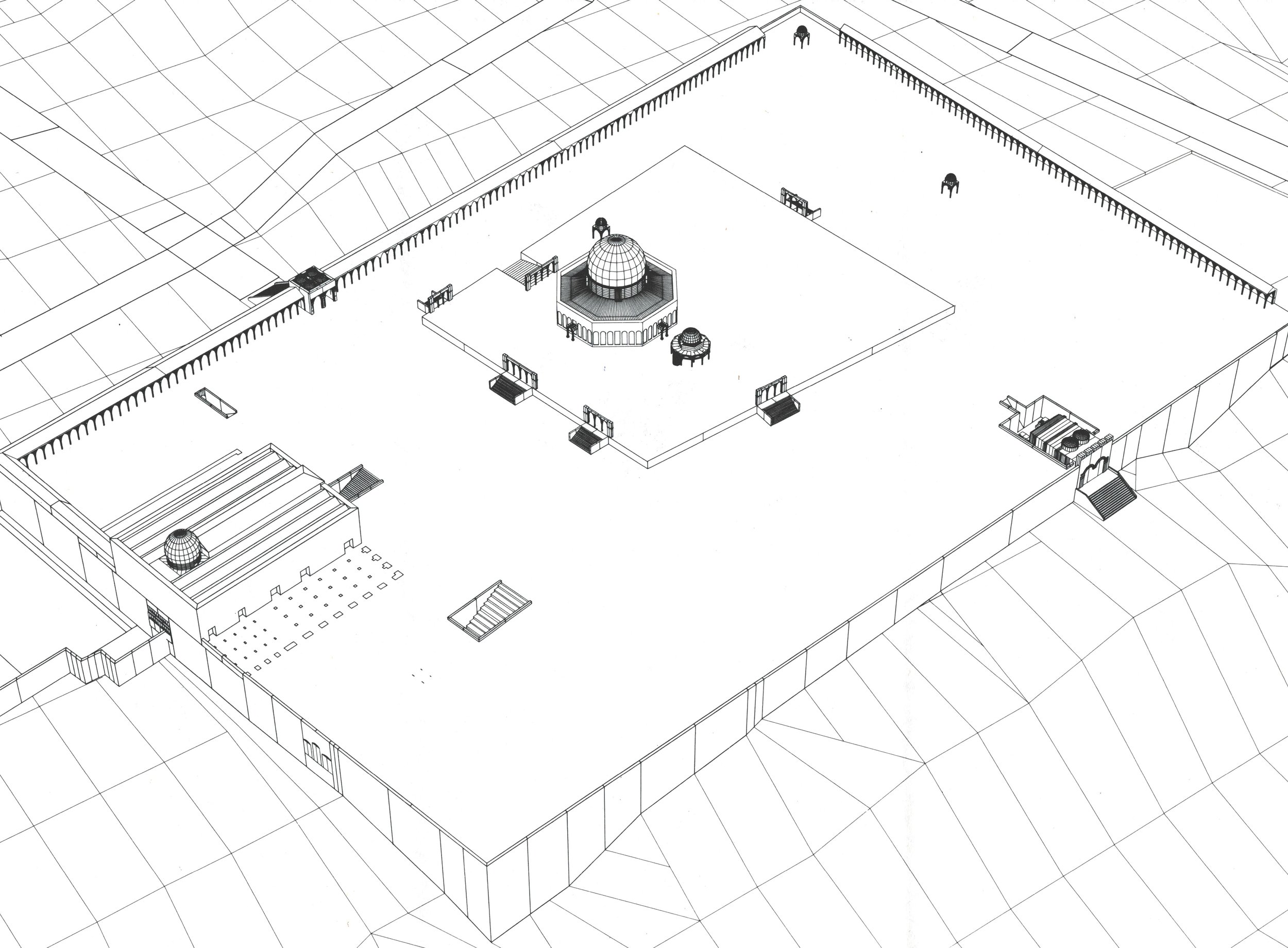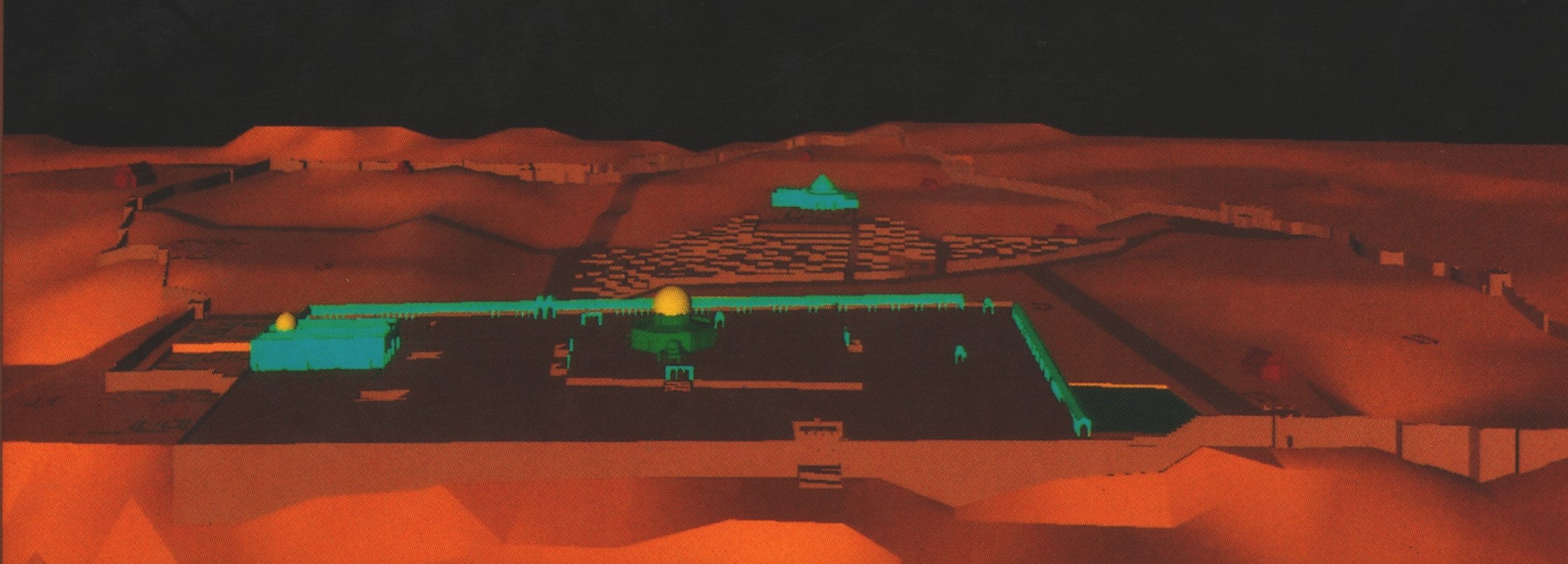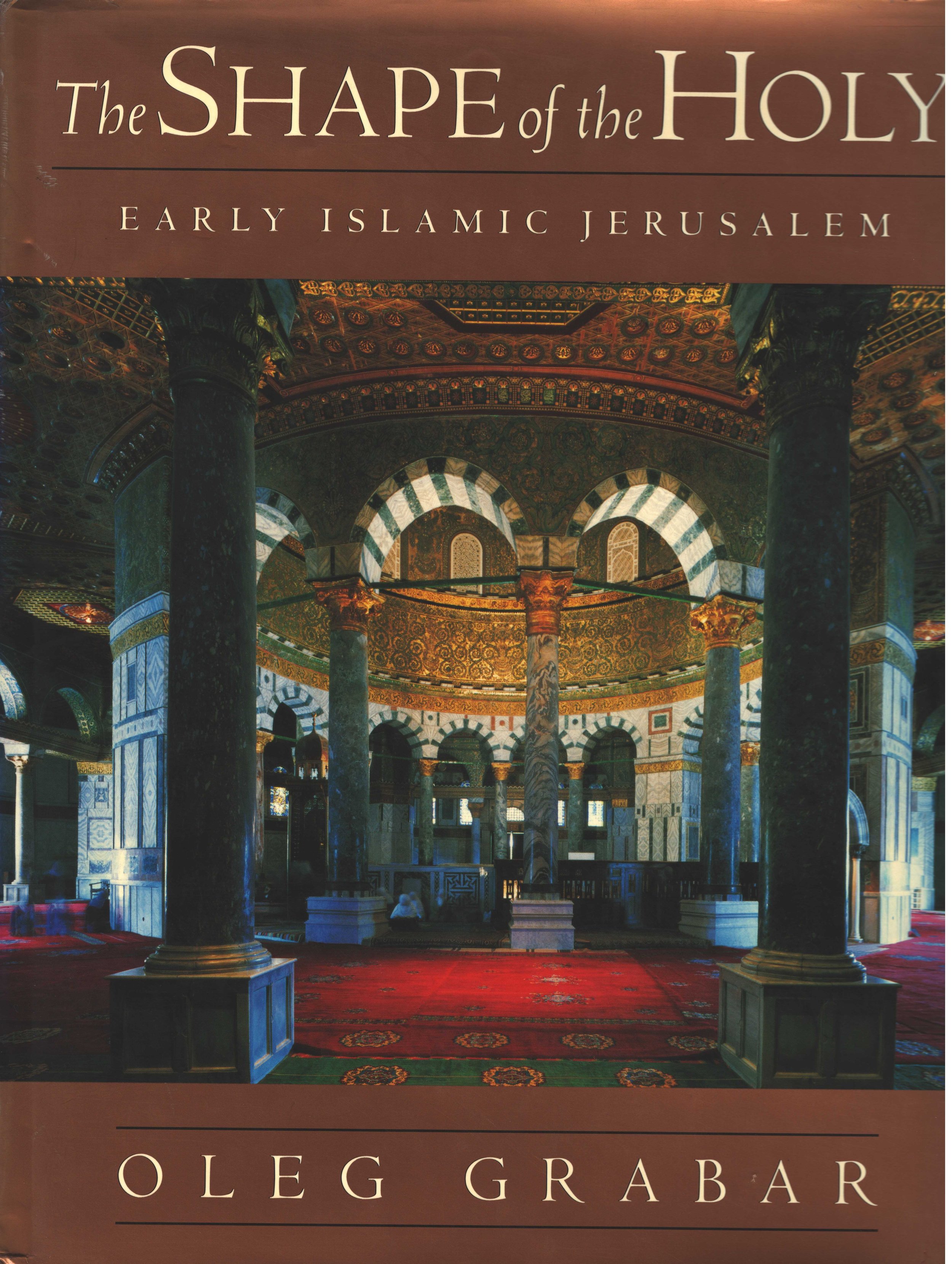An animated video of early Islamic Jerusalem
(النص باللغة العربية يتبع هذا النص)
(Images follow the Arabic text below)
This six-minute animated video on early Islamic Jerusalem was developed in 1993. It is part of a project that aimed at studying the evolution of early Islamic Jerusalem and that was carried out by the late historian of Islamic art and architecture Oleg Grabar (1929 – 2011; see Commemorating Oleg Grabar — Center for the Study of the Built Environment (csbe.org) and Half a Century in the Study of Islamic Art — Center for the Study of the Built Environment (csbe.org)). I had worked on this project as Professor Grabar’s post-doctoral research assistant from 1991 to 1993 at the Institute for Advanced Study in Princeton, New Jersey. Before that, I also had completed my PhD work under his supervision. The project included developing a digital Computer-Aided Design (CAD) model of Jerusalem that presents the city and a number of its buildings at three points in time: at the end of the Byzantine period just before the Muslim conquest of the city in the second quarter of the seventh century (shown in red); at the end of the Umayyad period in the middle of the eighth century (shown in green); and at the end of the Fatimid period in the late eleventh century (shown in blue). The video concludes with a walk-through inside the Aqsa Mosque as it is believed to have existed during the Umayyad period. I had developed this CAD model in cooperation with architect Abeer Audeh.
This project was one of the earliest examples anywhere to employ CAD technologies for the study of historical works of architecture and urbanism. The almost thirty CAD files developed for the project are all available online through the Archnet digital resource. The main outcome of the project, which incorporates a large number of images generated from the CAD model, is the book The Shape of the Holy: Early Islamic Jerusalem by Oleg Grabar (with contributions by Mohammad al-Asad, Abeer Audeh, and Said Nusseibeh), which was published by Princeton University Press in 1996.
The production of the video incorporated converting the original digital animation into a home system tape cassette (VHS) format. It was accompanied by a narration and was shown on a number of occasions upon its completion. With time, however, it was forgotten and disused. I recently came across a copy of it among some of my stored belongings and have converted the copy into digital format. The narration accompanying the animation unfortunately is missing in the video I have found. Moreover, the animation’s visual quality has somewhat suffered as a result of having its content undergo more than one format conversion. In spite of all this, the animation still provides a unique and informative presentation on the architectural and urban evolution of the city of Jerusalem during the late Byzantine, Umayyad, and Fatimid periods.
Mohammad al-Asad
Founding Director
Center for the Study of the Built Environment (CSBE)
February 1, 2024
لقد تم تطوير هذا الفيديو الرقمي الذي مدته حوالي ست دقائق في عام 1993. إن الفيديو جزء من مشروع هدفه دراسة تطوّر مدينة القدس خلال الفترة الإسلامية الأولى تم تحت إشراف أستاذ الفنون والعمارة الإسلامية الراحل أوليغ غرابار (1929 – 2011). لقد قمت بالعمل على هذا المشروع بصفتي مساعد بحث للأستاذ غرابار بين الأعوام 1991 و 1993 في معهد الدراسات المتقدمة في مدينة برنستون في ولاية نيو جيرسي الأمريكية. وقد كنت قد أتممت قبل ذلك رسالتي للدكتوراة تحت إشراف الأستاذ غرابار. لقد تضمّن المشروع تطوير مُجسّم رقمي (أُنتِج من خلال تقنيات التصميم بالحاسوب) لمدينة القدس يًبيّن المدينة وعدد من أبنيتها في ثلاث فترات: حين نهاية الفترة البيزنطية وقبيل الفتح الإسلامي في الربع الثاني من القرن السابع الميلادي (مبيّن باللون الأحمر)؛ وحين نهاية الفترة الأموية في منتصف القرن الثامن الميلادي (مبيّن باللون الأخضر)؛ وحين نهاية الفترة الفاطمية في أواخر القرن الحادي عشر الميلادي (مبيّن باللون الأزرق). وينتهي الفيديو بعد ذلك بجولة إفتراضية في المسجد الأقصى كما نعتقد كان تشكيله المعماري خلال الفترة الأموية. وقد قمت بتطوير المُجسّم الرقمي للمدينة وأبنيتها بالتعاون مع المعمارة عبير عودة
إن هذا المشروع كان من أول المشاريع التي نُفذت في أي مكان من خلال إستخدام تقنيات التصميم بالحاسوب لدراسة الأعمال المعمارية والحضرية التاريخية. وقد تم تطوير حوالي ثلاثين ملفاً رقمياً للمشروع، جميعها متوفرة من خلال موقع آرشنت الرقمي . وقد كان المُنْتَج الرئيسي للمشروع كتاب “ذا شيب اوف ذا هولي” الذي ألفه أوليغ غرابار مع إسهامات من محمد الأسد وعبير عودة وسعيد نسيبة، وقام بنشره دار جامعة برينستون للنشر في عام 1996 . ويحتوي الكتاب على عدد كبير من الرسومات التي كنا قد طوّرناها من خلال إستخدام تقنيات التصميم بالحاسوب
إن إنتاج هذا الفيديو تضمّن تحويل الفيديو الرقمي الأصلي إلى شريط فيديو مُرفق بسردٍ صوتيٍ. وقد تم عرض الفيديو في عدة مناسبات حين إنتاجه، ولكن تم نسيانه والتوقف عن إستعماله مع الوقت. وقد عثرت قبل فترة قصيرة وبالصدفة على نسخة من الشريط بين بعض مقتنياتي المخزّنة، وحوّلت الفيديو الموجود على الشريط إلى ملف رقمي. ولكن، وللأسف، فإن السرد الصوتي الذي يرافق الفيديو لم يكن موجوداً على الشريط الذي وجدته. كذلك فإن النوعية المرئية للفيديو قد تضررت بعض الشيء بسبب تحويل المحتوى من ملف رقمي إلى شريط ومن ثم إلى ملف رقمي مرة أخرى. ولكن بالرغم من كل ذلك فإن هذا الفيديو يُقدم تصوراً فريداً ومفيداً عن تطوّر مدينة القدس المعماري والحضري من نهاية الفترة البيزنطية وحتى نهاية الفترة الفاطمية
محمد الأسد
المدير المؤسس
مركز دراسات البيئة المبنية
شباط 1، 2024
